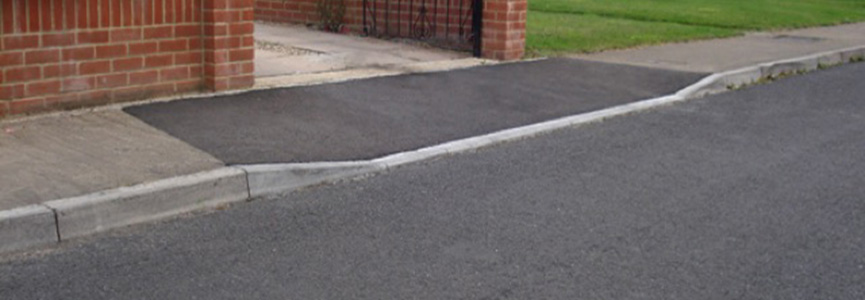If you need to create new access for vehicles to your home, and it involves crossing an existing pavement or footway, you must have a dropped kerb. Otherwise, if you drive across the footpath, the local Council may pursue you for the cost of any damage to the footpath and kerb, and others (such as telecom, electricity or water companies) may ask you to compensate them if their underground services are damaged.
In any case, crossing the footway with a vehicle at a place where the crossing hasn’t been approved by the highways authority, or no crossing exists, is against the law.
Download your planning maps here
There are a few things to bear in mind if you want a dropped kerb, so here’s our quick guide to what may be involved.
- For an average driveway, you’ll probably want to lower five kerb sections.
- You’ll need to obtain permission from your local Council as highway authority, assuming that the Council owns the road and footpath.
- If the road outside the property is a trunk road, a principal road or a classified road (class A, B or C), you’ll also need planning permission. You can check the status of the road by phoning your local Council’s roads or highways department. Your local planning department can tell you how to apply for planning permission (if you need it); you’ll have to submit drawings of what you propose, including a good-quality Ordnance Survey location plan and block plan showing your dropped kerb.
- The Council might decide not to grant permission, either as a roads authority or planning authority, or both. Reasons for refusing permission could include proximity to a road junction, bend or traffic lights. There may be insufficient visibility to allow safe use of the pavement crossing. There might be obstacles, such as a tree or street furniture, in the way.
- The Council will also need to be satisfied that there’s enough space in the garden to create a sufficiently large parking space. The car or light goods vehicle mustn’t overhang the footpath when it’s parked, and any gates must not open over the pavement. Some Councils state minimum lengths for the space, perhaps 4.5m or 6m.
- The Council will want you to use a porous surface for any hardstanding, to avoid increasing the surface water load on the drainage system. They may insist that a section of paving or blocks is laid behind the pavement to reduce the risk that – if you’re surfacing the hardstanding with gravel – the gravel doesn’t escape onto the pavement.
- If you are refused planning permission, you can appeal. Depending on where you live in the UK, this may take the form of a hearing by a local committee or the lodging of your appeal with the Planning Inspectorate. You can ask the local Planning Department to explain the procedure that applies in your area.
- Many local Councils will undertake the work themselves, but you’ll have to pay for it. Some Councils don’t allow private contractors to do the work, but – where the use of a private contractor is allowed – the work must meet the Council’s specifications. The contractor’s quotation must also cover the cost of any work needed to protect underground services.
- If the work is to be done by the Council, you may be able to find out the cost on their website. Costs vary, depending on where you live. For example, one Council quotes a price of £653 for dropping five kerb sections on a footpath that’s less than 2 metres wide. Another Council has a fixed price of £1,620 for any single crossing and charges an inspection fee of £330 if the work is done by a private contractor. There may also be a fee to pay for an initial inspection and quotation. If you need to apply for planning permission, the usual fees will need to be paid.
- Finally, people sometimes wonder if the section of footpath that they’ve paid to have altered belongs to them. It doesn’t: the Council still owns it!
To find out more about the procedure in your local area, you can enter a search term such as ‘dropped kerb Hounslow’ or ‘dropped kerb Glasgow’ into a search engine. Many Councils have detailed guidance notes and application forms available online. You can apply for your dropped kerb here.
